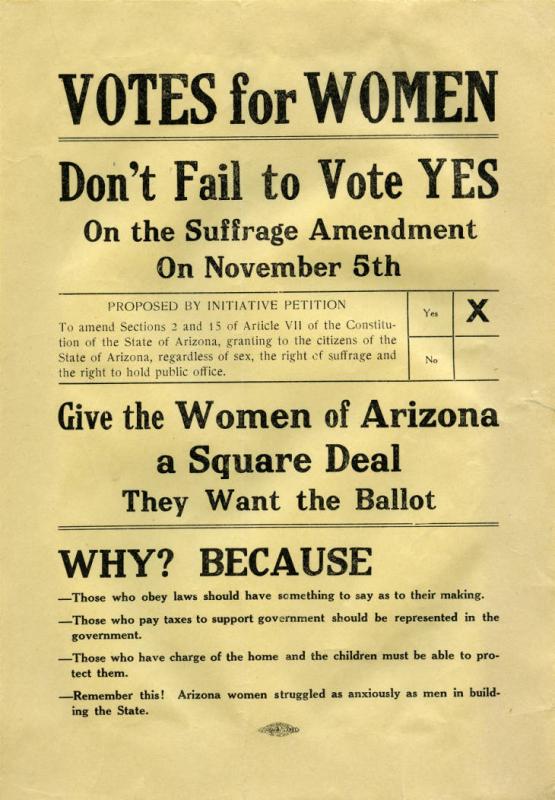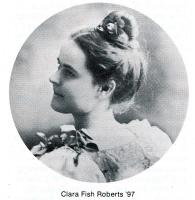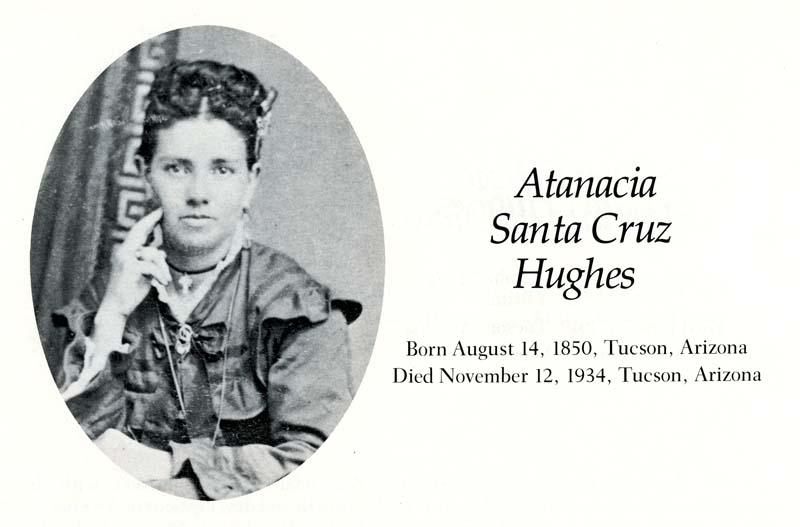Arizona Women Win the Vote
"I have been frequently asked what we are going to do with the ballot now that we have it. That depends upon ourselves entirely and how well we fit ourselves for its proper use. I hope you will band yourselves together, regardless of political, religious or personal differences, and make a study of the laws that govern women and children, so that our laws may be better." Frances Munds.[i]
Frances Willard Munds’ new strategy was to build support among male voters rather than rely on politicians. She and Pauline O’Neill already had reached out to Mormon women to enlist their support of woman’s suffrage. Munds sought support from all walks of life, appealing to common interest and seeking allies.[ii] In 1909 she formed an alliance with the Western Federation of Miners; they supported women’s suffrage in exchange for women’s support of labor issues. Munds and her colleagues also made alliances with labor leaders, farmers, ranchers, Democrats, Republicans, socialists, progressives, and populists.
Suffragists were divided about including Mexican women in the suffrage movement. Arizona suffragists met with prominent members of the Mexican business and political community in their homes. On the other hand, they did not target Mexican audiences. Laura Clay, NAWSA field worker, who had encouraged the exclusion of African American women in two southern suffrage campaigns, persuaded Arizona suffragists to exclude non-English-speaking Mexicans from the Arizona suffrage movement.[iii] Laura Gregg, an Arizona suffrage worker, was surprised when a few Mexican men asked when she would come and speak to their communities.[iv] She had assumed that they only spoke Spanish. Subsequently, Arizona suffragists provided pamphlets, posters, and speakers to Mexican communities.
Arizona suffragists turned their attention to the constitutional convention as statehood approached and sent petitions and speakers to the conventions. Despite their efforts, the new state constitution did not include woman’s suffrage. When Arizona became a state on February 14, 1912, suffragists hoped that woman’s suffrage would be one of the first acts approved. Governor George W.P. Hunt announced his support of woman’s suffrage in his inaugural address to the legislature. On April 10, 1912, John Titus Hughes, son of Josephine Brawley Hughes, lived up to Susan B. Anthony’s prophecy by introducing a resolution to give women the right to vote. This bill passed in the House but was defeated in the Senate by a single vote. Accustomed to such defeat, Munds mobilized suffrage supporters with a new strategy.
Munds’ new strategy was to pursue suffrage by a popular initiative—taking the issue directly to voters. Because of her efforts to organize support in every county, the suffragists were poised for action. On May 8, 1912, the women began collecting signatures for a voter initiative to amend the Arizona constitution to allow woman’s suffrage; the first signature collected was in Yuma County. With only six weeks to collect the 3,342 signatures needed for the ballot initiative, the suffragists worked quickly and collected over 4,000 signatures by the July 5th deadline. As soon as sufficient signatures were collected, they began their campaign for suffrage votes. They distributed more than 20,000 leaflets, badges and buttons at the Arizona State Fair. They organized marches in Yuma and Tucson, wrote editorials in the newspapers and held debates. On October 7, Phoenix Mayor Lloyd Christy gave permission to Frances Munds to hang a Votes for Women banner across Center Street. The initiative campaign was efficient and cost less than $2,000.[v]
On November 5, 1912, women succeeded in convincing men to vote for the Arizona Woman’s Suffrage initiative. This amendment to the new state constitution was approved with 13,422 “yes” votes and 6,202 “no” votes, the largest margin for approval in the U.S. (68 percent). On November 8, Governor Hunt signed the amendment into law, marking Arizona as the tenth state to grant women suffrage.
After securing suffrage, Arizona women registered to vote in large numbers. In Pima County, 589 women registered in 1913.[vi] This registry provides a picture of hardworking women eager to exercise their rights as citizens. Some of these women were associated with the University of Arizona; others came from prominent Tucson families. The vast majority have stories that are unknown, except perhaps to their families.
Clara Fish Roberts was the first woman to register to vote in Pima County. She also had been the first woman to enroll in the UA in 1891[vii]. Her family had ties to education since her mother was hired in 1873 as one of the first public school teachers. Roberts’ sister-in-law, Annie May Ashworth Fish, also registered; Fish was an instructor at the UA. Roberts was the first woman elected to the school board, founder of the Tucson Collegiate Club, and a member of the League of Women Voters and Pioneer Historical Society.
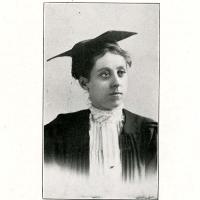
Estelle Lutrell, UA Libraries,Special Collections
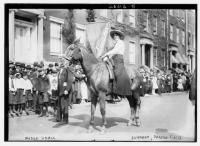
Madge Udall, 1913 Suffrage Parade, Washington D.C. Photo courtesy of the Library of Congress.
Estelle Lutrell, the first full time librarian at the UA, also registered to vote in 1913. She devoted her career to building the UA library and contributed to the development of libraries around the state. You can learn more about her life and work in the online Special Collections exhibit, "Miss Estelle Lutrell: an exhibit about UA Library History."
University students who registered to vote included Alice Patton Lawson, Laura May Swan, Margarite B(ernice) Browne, Helen M(ontana) Kelly, pictured in the 1913 Sahuaro yearbook.[viii] Several alumna registered, including Mary Neal Bernard, Ora Martena McDermott, Laura Perry, Laura A. Spires, Norina Gayden Turell, Petra Soto, Madge Udall, and Jane Herbst Rider, the first woman engineer in Arizona. Laura A. Spires registered with her sisters, Leila Martha Spires Morris and Mary Alice Williams. Madge Udall was the fiancée of Frances Munds’ son. She rode in the 1913 national suffrage parade carrying a banner celebrating Arizona women gaining the vote.
Several well-known suffragists registered to vote, among them Josephine Brawley Hughes, Louisa Goldschmidt, Rosa Goodrich Boido (physician), and Clara M. Schell (first woman optometrist in Arizona). Several women came from prominent Tucson families: Ethel Drachman, Bertha Frank Jacobs, and Henrietta Jacobs, Mabel R(oberts) Plumer, Hortense Dalton Ronstadt, Edith B. Coffin Shreve, and Phoebe Brink Bogan. Registering to vote was a family effort. Bell(e) Cleary Corbett registered with her sister-in-law Lizzie Hughes Corbett, the daughter of Sam Hughes and Atanacia Santa Cruz Hughes, who also registered. Lizzie’s sister Mary Hughes Dietrich and her niece Gulie Caperton signed the registry together. This registry of women in Pima County who registered to vote in 1912 may contain members of your family.[ix]
Several women were successful in the first elections when women could vote. Frances Willard Munds was sworn in as Senator in the second Arizona legislature in January 1915, along with Rachel Berry of Apache County. Frances remarked: "We believe that we have proved ourselves worthy of the ballot. Women have been earnest in their endeavors to support the best candidate and to work by the right means for the right measures…Our friends, the trueblue conservatives, will be shocked to think of a grandmother sitting the state Senate.”[x] Munds fulfilled her pledge to improve women’s situation by introducing legislation that increase the widow’s exemption for property taxes from $1,000 to $2,000.

Arizona Republic Headline " Arizona Ratifies Suffrage Amendment".
Chronicling America Digital Historic American Newspapers, Library of Congress
Suffragists kept the suffrage conversation going in Arizona until the national amendment was passed in the U.S. Congress. The Arizona Legislature ratified the 19th Amendment to the U.S. Constitution on February 12, 1920, with a unanimous vote in both houses.
__________________________________________________________________

